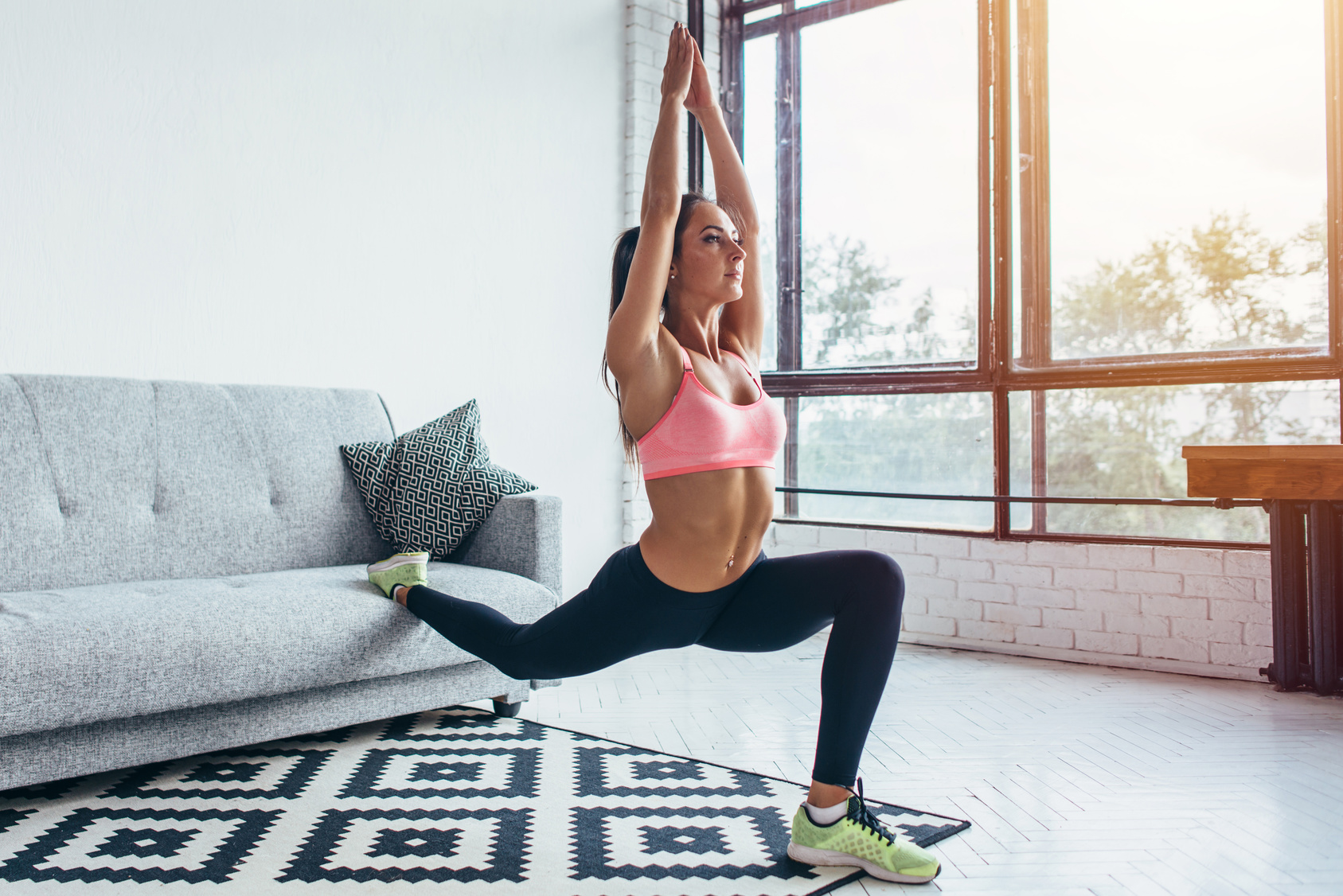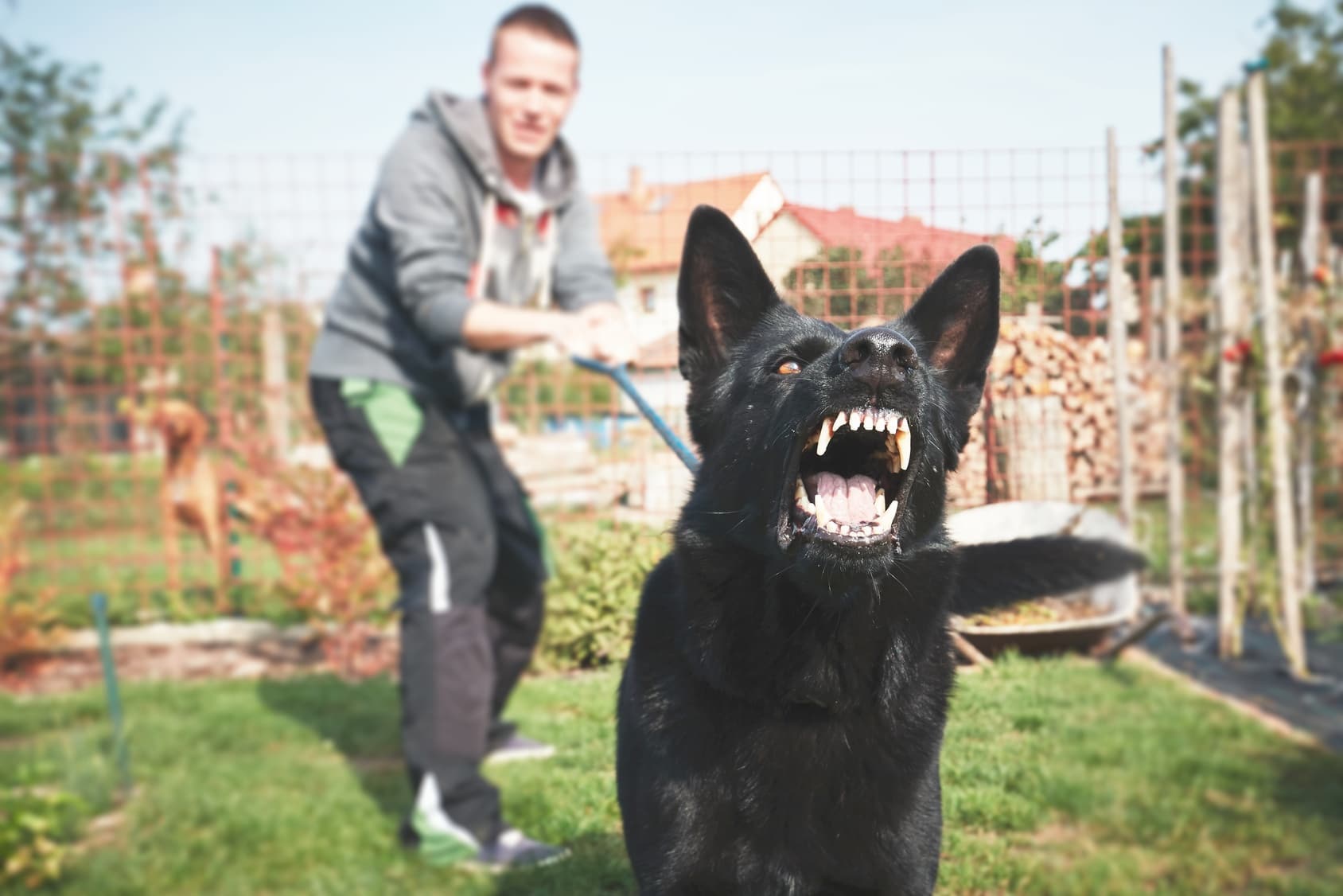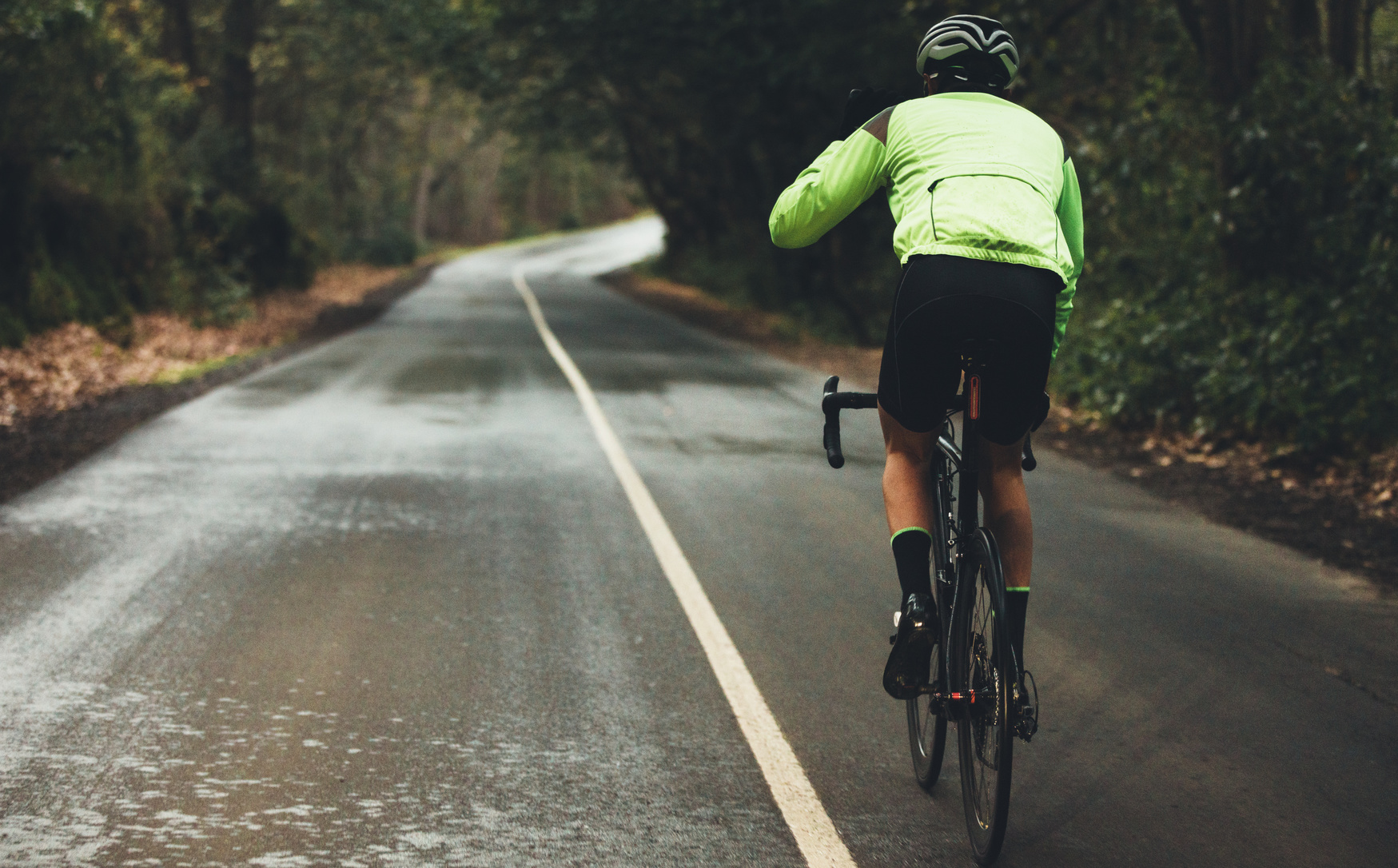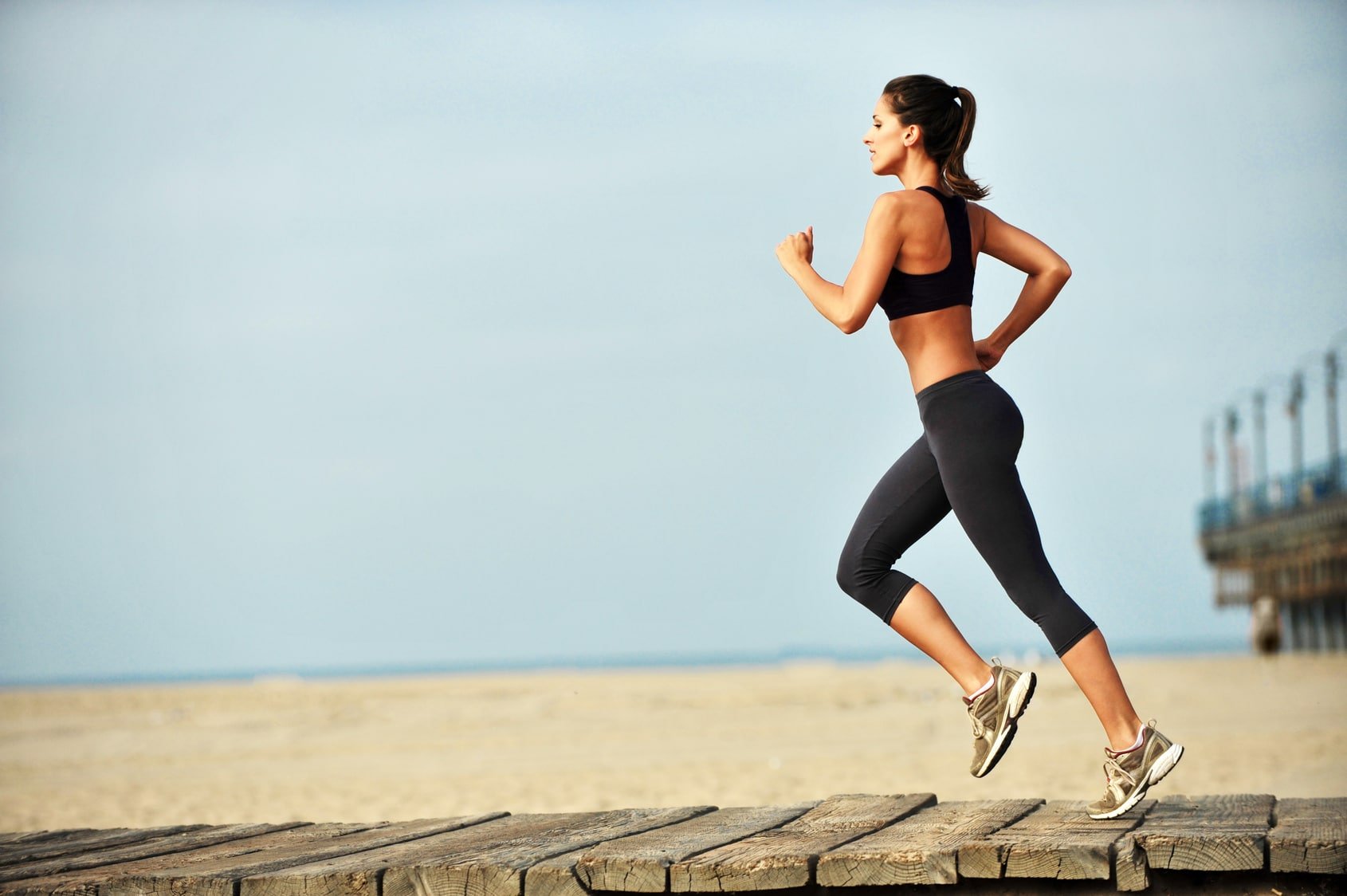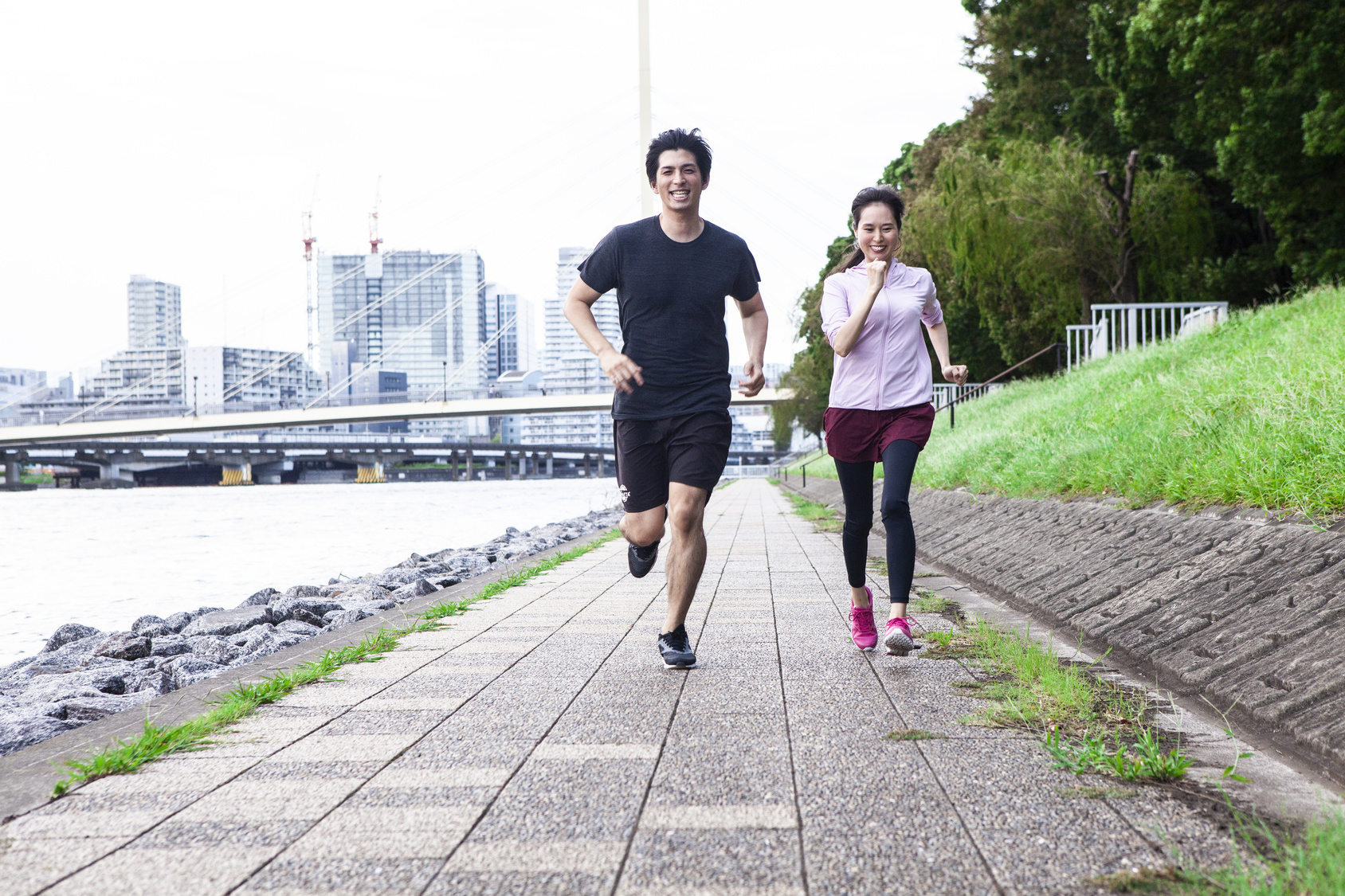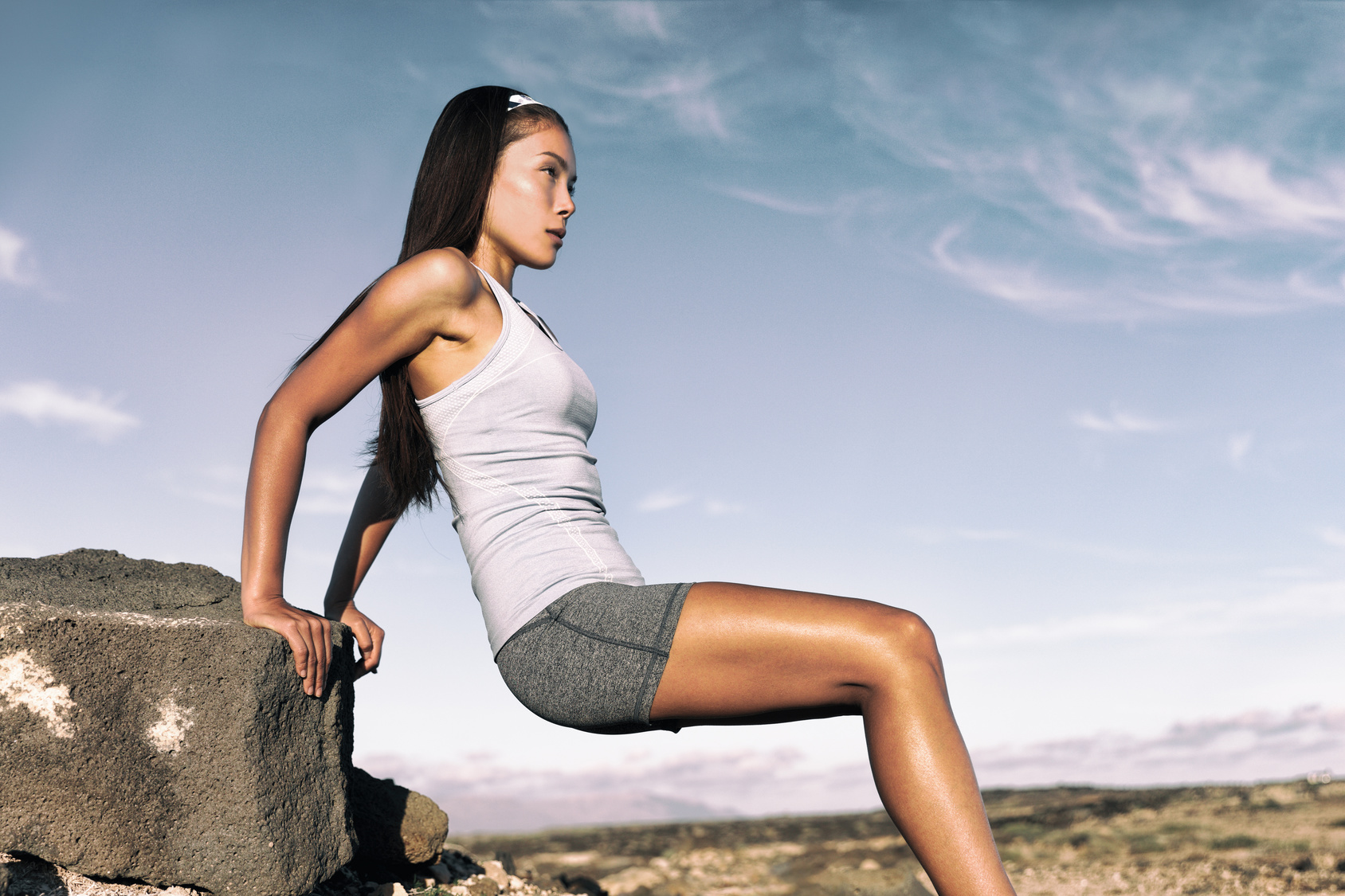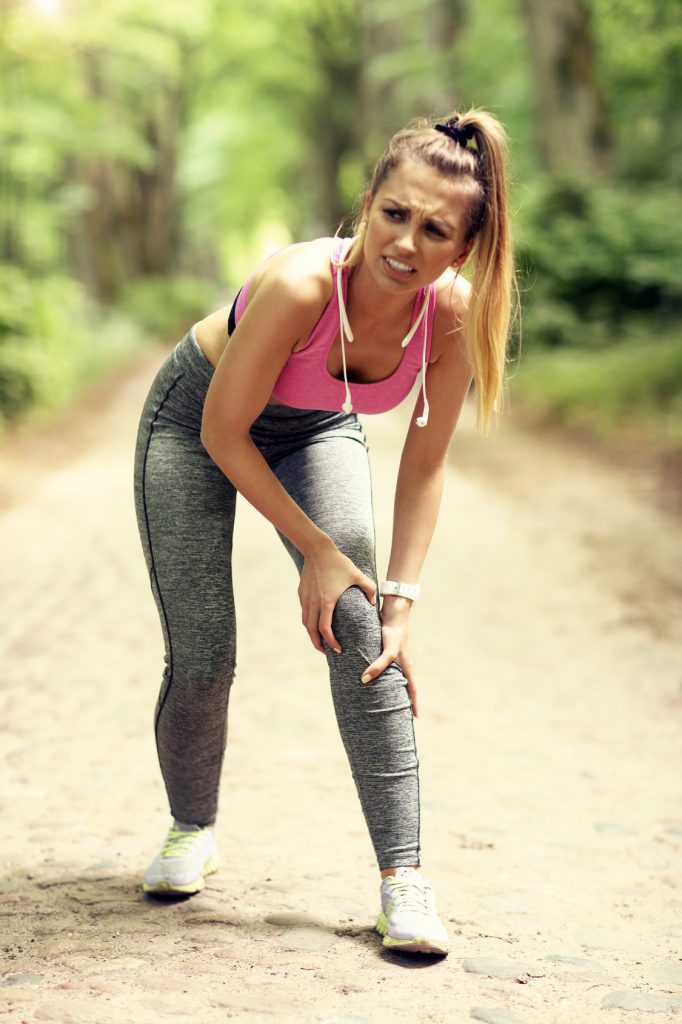Looking to start bodyweight exercises for runners but have no idea where to get started? Then you have come to the right place.
Here’s the truth.
Bodyweight training, or calisthenics, is one of the best options you got to improve your fitness, lose weight, and build the body of your dreams.
It’s the ideal way to work out at home, in the gym, or wherever you happen to be. Most calisthenic exercises are convenient, and by definition, require no equipment—just your body and some space around you.
Seems hard and scary, but don’t lose heart! As we’re going to see in today’s post, calisthenics is not rocket science.
Here’s your complete guide on how to start bodyweight training as a beginner.
In this sweet guide, you’ll learn:
- The benefits of calisthenics
- How to get started with bodyweight exercises
- What is a calisthenic workout
- The basic exercises you need
- How to develop proper technique
- And so much more.
Sounds good?
Let’s get started.
What are Bodyweight Training Exercises?
As the name implies, bodyweight training consists of strength-building exercises that utilize body weight to create resistance for the muscles against gravity instead of resistance in the form of bars, dumbbells, kettlebells, medicine balls, exercise machines, you name it.
Typical calisthenics workouts can range from straightforward sessions of push-ups and pull-ups to an elaborate routine of muscle-ups and jackhammers.
Bodyweight training is simple to learn, efficient, and can be done virtually anywhere, at work, at home, while traveling, etc. Think of it as a portable gym.
What I like the most about bodyweight training is scalability. You can easily modify and re-adjust your routine to match your fitness skill, whether you’re a newbie couch potato or an elite gymnast.
Bodyweight Exercises Benefits For Runers
Bodyweight exercises are some of the best moves that can help you improve your fitness level and get into the best shape of your life without paying for hefty gym fees, or be confined to a gym.
This kind of training is really convenient, and can be done anytime anywhere.
You don’t need any sort of fancy equipment or access to the gym.
All you need is your bodyweight, a clear and comprehensive routine and a bit of determination.
The bulk of bodyweight exercise is convenient, simple and scalable, so as you long as you are willing to keep good form the entire time, listen to your body, and do your best, you will be in a good place.
The routine I’m sharing with you today involves doing a set of challenging bodyweight exercises designed to push you hard, while the recovery periods refresh you for the next round of high-intensity work.
To make the most out of this workout, be sure to push your hardest on every interval—just keep good form the priority here—and by the end of the routine you should feel utterly exhausted.
If you are not completely worn out, you are not pushing it hard enough.
So make sure to push yourself as hard as possible while keeping proper form the entire time.
If your form starts to suffer, that’s a clear sign that you should back off, recover a bit, then go at it again.
Just don’t give up.
The 16 Best Bodyweight Exercises For Runners
If you haven’t exercised in a long time, a good segway to the world of bodyweight training is starting with basic exercises—think push-ups and pull-ups.
These exercises are building blocks of strength training. They form the foundation of almost every move you’re going to make in the future.
Do them with good form, though. Proper technique is especially vital for beginners, as the movement habits you develop off the bat will stick you as you progress.
Once you master the basic callisthenic exercises shared below, the fancier moves will start to seem much more doable.
Bodyweight Exercise For Runners – 1. Air squats
Benefits
Bodyweight squats are wonderful multi-joint exercises target almost every muscle in your lower body.
They are also key for boosting endurance, especially if you are doing any type of running, biking, and swimming.
Here are some of the common mistakes:
- Rounding the shoulders and curving the back as you squat.
- Excessive forward knee bending until they extend past the toes.
- Knees falling inward or outward.
- Dumping weight into the toes, which places strain on the knee joints.
- Misalignment of the knees and toes.
Proper Form
Begin by standing with your feet a little wider than hip-width apart, toes should be slightly turned out, with the arms resting at your sides.
Next, while bracing your core and pulling your shoulder blades in towards each other, start squatting by bending your knees slowly while putting most of your bodyweight onto your heels.
Make sure to keep your knees aligned over your ankles and back straight the entire time.
As soon as you reach the bottom of the squat, press back up through the heel and return to standing position.
Do this exercise slowly and gradually at first, but as you master proper form, be sure speed it up to boost the cardiovascular activity and burn some mad calories during this exercise.
Bodyweight Exercise For Runners – 2. Push-ups
The push-up is a classic bodyweight exercise targetting the upper body and core. It works the biceps, triceps, and pecks like nothing else—as long as you perform it right
Not only bad push-up form is a waste of time and energy, but it could also lead to lower back pain and severe shoulder and wrist issues.
Here are some of the common push-up pitfalls:
- Lifting the butt high in the air.
- Performing half a push-up—not going low or high enough.
- Sinking the hips down.
- Holding the breath.
- Placing the palms in front of the shoulders.
- Keeping the chin too close to the chest.
- Poor head position.
- Putting the hands too far forward.
- Not fully straightening the arms on the push-up.
Proper Form
Begin by setting up your weight supported onto your toes and hands. Place your hands underneath your shoulders, then extend your legs straight out behind you. Keep your head in a neutral position, arms and hands slightly below your shoulders, fingers pointing forwards.
Tighten your core, squeeze your butt, then lower your body until your chest is an inch or two above the floor, elbows pulling back at about a 45-degree, then rise back up by fully extending your arms. That’s one rep.
Engage your core and buttocks and keep your elbows tucked in to your sides throughout the movement. This helps keep your body in a straight line from head to heels.
Can’t perform a single push-up? Use a bench or an elevated surface to put your hands on. I won’t recommend dropping to your knees as it instills lousy form.
As you get stronger, opt for lower surfaces for your hands until you can do clean pushups with no assistance.
Push-up variations: Military pushups, wide-stance pushups, incline/decline pushups, archer push-ups, one-hand push-ups, Hindu push-ups, etc.
Bodyweight Exercise For Runners – 3.Plank
The plank is one of the most basic core exercises out there, but it’s not as simple as you might think. It’s actually one of the most common mistakes when it comes to technique.
Planks are versatile exercises that increase core strength and relieve the lower back. But if performed wrong, they can do more harm than good.
Here are some of the common form errors:
- Not engaging the core muscles
- Sinking the hips
- Arching the back
- Looking up straight ahead
- Tilting the hips
- Positioning the hands too far apart
- Placing the arms behind or in front of the shoulders
- Lifting up the hips too high
- Bringing the shoulders beyond the elbows
- Not engaging the legs and butt
Proper Form
Begin on your knees and hands in the classic tabletop position.
Position your elbows underneath your shoulder, then tuck your toes and lift your knees off the floor, and look straight toward the floor.
Engage your shoulder muscles and keep your neck aligned in a neutral position, feet together, and toes touching the ground.
Readjust your hand position until your wrists are lined up under your shoulders.
Hold the plank position for as long as possible without losing form.
Plank variations: low plank arm reach, reverse plank side start plank, low side plank, extended plank, low side plank crunch, forearm plank, etc.
Bodyweight Exercise For Runners – 4. Bench Dips
Also known as a triceps dip, this is a classic bodyweight exercise. Dips target the chest and triceps and are best performed off the platform of a chair or a bench.
Here are some common mistakes to watch out for:
- Not going low enough or going too low
- Moving too fast
- Flaring the elbows to the side
- Not engaging the core
- Gazing at the ceiling
- Butt tilting
Proper Form
Start facing away from a chair or bench, then the front of the platform with both hands shoulder-width distance apart, extending legs out in front of you.
Engage your core, flex at the elbows to slowly lower your body until your arm at the forearm forms a 90-degree angle. Pause at the bottom for a one to tow count, then lift yourself powerfully using your triceps. That’s one rep.
Once you can breeze through 12 to 16 reps, move on to a more advanced move, like close grip push up.
Bench Dips Variations: band-assisted dips, dip to leg raise, assisted dip machine, weighted dips, jumping dips with negatives, etc.
Bodyweight Exercise For Runners – 5. Pull-ups
Pull-ups are maybe the best back exercise and better done with a pull-up bar. It’s also one of the hardest, so take your time and start with easier variations.
Here are some common pull-ups mistakes:
- Not getting the chin above the bar
- Gripping too wide
- Staying straight as an arrow
- Not using the full range of motion
- Letting the elbow flare
- Not keeping the back flat
- Not keeping the shoulders back
- Not going to “dead hang”
Proper Form
Grab a horizontal bar with both hands, palm facing away from you and hands at shoulder-width apart.
Next, while flexing your traps and shifting your shoulders up and back, pull your body up toward the bar, then slowly lower down to complete one rep.
Pull-ups variations: chair-assisted pull-ups, close grip pull-ups, wide grip pulls, butterfly pull-ups, kipping pull-ups, etc.
Bodyweight Exercise For Runners – 6. The Bridge
Also known as the hip raise, the bridge is a fantastic pose for increasing strength in the hamstrings, back, and glutes.
When performed incorrectly, the bridge can lead to neck, lower, back, or knee issues.
Here are some of the common blunders:
- Lengthening the muscles within the quads
- Having the feet too close to the butt.
- Lifting the heels off the ground
- Not keeping the toes in line with the knees
- Put too much force on head and neck
Proper Form
Begin by lying down flat on your back. Pull your shoulders back and down.
Place your arms alongside your body, then bend your knees and place your feet on the ground, a hip-width distance apart.
Walk your feet back towards your butt, then, on the inhale, press into your arms and feet to lift your hips towards the ceiling. Squeeze your glutes as you rise to create a straight line from your knees to shoulders.
While keeping your knees, hips, and chest aligned, hold the top of the movement for three to ten seconds. Do not let your hips sag or drop.
Slowly lower down and repeat.
Bridge variations: single leg bridge, bridge with a squeeze, weighed bridge, pulsating bridge, etc.
Bodyweight Exercise For Runners – 7. Lunges
Another fantastic lower body exercise for building up the glutes and the quads.
Lunges also help improve coordination and balance, and they’re great for improving proprioception.
But they are also extremely and commonly easy to get wrong. Bad technique doesn’t just look sloppy; it could also cause injury.
Avoid these common pitfalls:
- Bending the torso forward
- Leaning forward or back
- Turning the foot inward
- Externally rotating the back knee
- Lowering the rear knee too fast
- Not maintaining a straight back
- Losing balance
- Taking very short strides forward or backward
- Extending the knee past the toes on the lunge
- Shifting the weight from the heel to the toes—or riding the toes.
- Pushing the hips forward
Proper Form
Assume an athletic position, with the feet hip-width apart, back flat, and core engaged.
Take a slow, controlled step forward with your right leg as far as possible. Your front heel is roughly two feet in front of your rear knee as it bends toward the ground.
While keeping the weight in the heels and spine flat, lower your body until both of your knees are bent at a 90-degree angle. Avoid leaning back or forward throughout the movement.
Hold for a moment, then take a big step forward with your left leg. Keep alternating the legs to move forward across the floor. Avoid bouncing or using too much momentum.
Lunge variations: jumping lunges, static lunges, isometric lunges, reverse lunges, step up reverse lunge, rear foot elevated lunges, lung with reach, weighted lunges, etc.
Hardest Bodyweight Exercises For Runners
once you master the basic bodyweight movements, make your workouts more challenging by adding the following exercises.
Bodyweight Exercise For Runners – 8. Spiderman Plank Crunch
Benefits
This awesome exercise will not only raise your heart rate through the roof, but it will also test your core strength and balance to the breaking point.
Proper Form
To do them right, start in a standard plank position with your body perfectly straight from head to toe, forearms firmly resting on a mat.
Make sure to keep your back straight and core engaged the entire time.
Next, lift your right foot off the floor, then bring your right knee forward towards your right elbow, pause, then slowly return to the starting position.
Repeat on the other side to complete one rep.
Alternate sides for a total of 12 reps to complete one set.
Aim for three sets.
Bodyweight Exercise For Runners – 9. Dive Bomber Pushups
Benefits
These are my favorite types of a push-up. Also known as the Hindu push-ups, this exercise can help you tone up almost every muscle in your body while providing you with a killer cardiovascular workout
Proper Form
This will push your heart rate to the max.
So make sure to pace yourself here.
Begin in a downward dog position with your butt elevated in the air, and feet spread roughly shoulder width.
Make sure your body is forming an inverted “V’ shape, with your head down.
Next, lower your chest to the floor by bending your elbows toward the floor until your chest almost touches it, then push forward into a dip motion to an upward dog position.
Pause for a moment, then return back to the standing position to comlplete one rep.
Do 10 reps to complete one set, aiming to perform 3 total sets.
Bodyweight Exercise For Runners – 10. Side plank crunch
Benefits
Planks are some of the best bodyweight exercises, so make sure to do a lot of them.
However, the variation I’m sharing with you today will not only test your core mettle, but they will also drive your heart rate through the roof.
Side plank crunches strengthen the obliques and the deep ab muscles, and they are an awesome cardiovascular exercise.
Proper Form
Begin in a standard plank position with legs together, back straight and core engaged.
Then, lean to your left side while lifting your right arm up toward the ceiling, bend your right elbow and place your right hand behind your head.
Next, while keeping your right shoulder tracking over right hand and hip raised the entire time, bend your right knee and bring in to touch your top elbow, and start performing crunches.
Do 8 reps on each side to complete one set.
Aim for three sets.
Bodyweight Exercise For Runners – 11. Pike Jumps
Benefits
This is another awesome core exercise that will help you develop core strength and stability while hitting your hips and quads hard and pushing your cardiovascular endurance to the limit.
Proper Form
Begin in a standard plank position with palms on the ground, core engaged, back perfectly straight and hands directly beneath your shoulders.
Make sure to form a straight line your head to your heels.
Next, while engaging your core, jump your feet together and forward and assume a pike position with butt raised in the air, pause for a moment, then jump back to the plank position while making sure to keep the hands firmly placed on the ground.
That’s one rep.
Do 16 reps to complete one set.
Aim for three sets.
Bodyweight Exercise For Runners – 12. Jump Squats
Benefits
Jump squats are some of the best plyometric exercises you can do to develop explosive power, which is key to building your muscles’ ability to generate force more quickly.
This exercise mainly works the calves, quadriceps, hamstrings, and glutes—vital running muscles.
Proper Form
Stand as straight as possible with the feet spread shoulder-width apart, arms hanging at the sides and core engaged.
Next, while keeping your chest up and back straight, squat down by bending your knees until your thighs are parallel to the ground.
Be sure to keep your back straight and knee is tracking over your toes.
Then, while pressing mainly with the ball of your feet, jump up explosively in the air as high as you can, using the thighs like springs.
As soon as you land on the floor, go straight away to the next squat and jump again.
Do 20 reps to complete one set.
Aim for three sets.
Bodyweight Exercise For Runners – 13. Windshield Wipers
Benefits
This awesome core exercise is ideal for targeting the rectus abdominis and obliques muscles to activate and strengthen your core stabilizing muscles, which is crucial for keeping your trunk steady and good posture while you are running.
Proper Form
Start out by lying down on your back, then raise your legs to a 90-degree angle.
For more support, feel free to spread your arms straight out to your sides.
Next, to perform this exercise, rotate your legs to your right side, stopping short of touching the floor, pause for a moment, press back up, then turn to the left side, and press back to starting position to complete one rep.
Make sure your legs are moving from side to side in a “windshield wiper” motion.
As you get stronger, make it more challenging by bringing your arms closer into your sides so they offer less support.
Do 10 slow reps to complete one set.
Aim for three sets.
Bodyweight Exercise For Runners – 14. Single Leg Elevated Glute Bridge
Benefits
As you may already know, glutes are the source of power when it comes to running.
Good news is the single leg elevated glute bridge exercise is one of the best exercises that target these large and powerful muscles.
Strong glutes can help you run faster and longer while preventing common injury.
Plus, it also builds balance and coordination.
Proper Form
Lie down on your back with your feet flat, knees bent, ankles hip-distance apart, then raise your right leg off the floor, pulling the knee to your chest.
This is the starting position.
Make sure to extend your right leg as straight as possible toward the ceiling.
Next to perform this exercise, raise your glutes off the floor by driving through the heels and extending your hip upward.
Be sure to extend your right leg as far as you can, hold it for 30-second to one full minute, then slowly lower your leg down and switch sides to complete one set.
Aim for three sets.
Bodyweight Exercise For Runners – 15. Side Lunges
This is a unique variation of the standard lunge that builds strength in the hamstring, abductors, quadriceps, and glutes. This lateral exercise is also great for coordination.
When side lunges are performed incorrectly, they can result in pain or injury to the lower back, hips, and knees.
Here are some of the common form errors:
- Not keeping the torso uprightand engaged core
- Extending the knees out too far
- Stepping too wide while performing the side lunge movement
- Not keeping the weight distributed evenly
- Not keeping the toes in line with the lunging knee.
Proper Form
Assume an athletic position with your feet together, knees and hips slightly bent, and head and chest up.
On the inhale, take a slow, lateral step to the right side, then bend into the right knee and sit your hips back as you’re going to sit in a chair.
Stay low while keeping the weight in your heel and bending your knee to a 90-degree angle, knee staying in line with the toes.
Exhale and press through the right heel to straighten the leg and step back to starting position.
Switch sides and repeat.
Side Lunge variations: Plyo side lunge, dumbbell lateral lunge, reverse side lunge, curtsey lunge with a kick, single-leg deadlift to reverse lunge.
Bodyweight Exercise For Runners – 16. Burpees
Benefits
This compound movement will blast your heart and increase your stamina like nothing else.
Burpees target virtually every major muscle group in the body while helping you become functionally fit in the shortest time possible.
It’s no wonder that the burpees are the bread and butter of most CrossFit workouts and military training programs.
Here are a few of the sad burpees errors that bring tears to my eyes:
- Going too fast while ignoring proper
- Not properly stabilizing the core.
- Allowing for the back to sag when doing the push-up.
- Holding the breath.
- Sacrificing reps for form.
Proper form
Start by standing with feet shoulder width apart.
Squat down by bending your knees, then lower your body toward the floor by putting your hands on the floor in front of you.
Thrust your feet back, and lower yourself into the bottom portion pushup position, so your legs are fully extended, abdominals tights, and arms straight.
Then in one swift and smooth motion, jump your feet back into the squat position and leap up as high as possible from the squat position.
That’s one rep.
Repeat as fast as possible.
Burpee variations: push-up burpee, superman burpee, side burpee, start jump burpee, mountain climber tuck jump burpee, dive bomber burpee, etc.
The Bodyweight Strength Routine For Running
We’ve all heard of the saying, “failing to plan is planning fail.”
You need a concrete plan if you want to reach your fitness goals. Not only does it improve your training consistency, but it also allows you to monitor your progress and see where you need more work.
The following plan has been designed to increase endurance, build strength while burning some mad calories in the process.
Perform the exercises in order, two to three times a week, with at least one day of full recovery between each go. Take 30 to 60 seconds to rest after each round. Repeat five times.
Whatever you do, make sure to start in line with your current fitness skill, training goals, schedule, and personal preferences. Give it a few months, and you’ll be a leaner, stronger athlete for it.
To get you started, try the following 3-day program.
Monday, Wednesday, Friday: Full body circuit
- Ten push-ups
- 30 squats
- 20 sit-ups
- Ten chair dips
- Five pull-ups
Repeat the entire circuit 5 times.
More Bodyweight Exercises
As you get fitter, feel free to add in more bodyweight exercises of various intensities and reps. Some of these include:
Bodyweight Y Squats
X Pushup
Bodyweight Single-Leg Deadlift
Bodyweight Lateral Squat
Mountain Climbers
Bodyweight Shoulder Taps
Calf raises
Dead Bug
Bird Dog with Rotation
Bodyweight Bird Dog
Double Lunge with Reach
Back Extensions
Hand Curls
Chin-ups
Leg raises
Sit-ups
Scissors
Cross-Body Mountain Climbers
Squat Thrusts
Reverse Lunge and Hop
Cross-Body Extension
Elbow to Knee
Wall Slides
Side Plank with Rotation
Dive Bomber Push-Ups
Side Plank with Extension
Jump Squats
Plank to Push Up
Single-Leg Up and Down Dogs
Figure 4 Mountain Climbers
T Push-Ups
Jumping Lunges
Single-Leg Burpee
Scissors
High Knees
Cross Overs
And so much, so much, more.
New to Running? Start Here…
If you’re serious about running, getting fit, and staying injury free, then make sure to download my Runners Blueprint Guide!
Inside this guide, you’ll learn how to start running and lose weight the easy and painless way. This is, in fact, your ultimate manifesto to becoming a faster and a stronger runner. And you want that, don’t you?
Click HERE to check out my Runners Blueprint System today!
Don’t miss out! My awesome running plan is just one click away.






